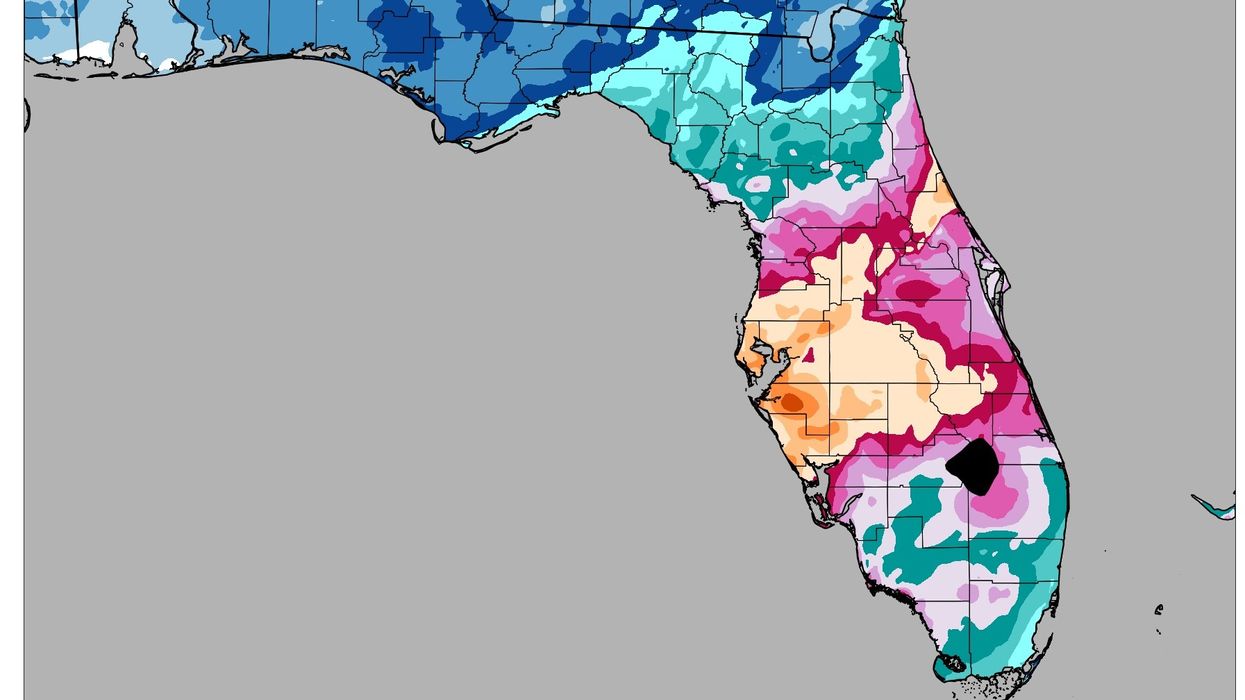Weather conditions in central Florida are forecasted to rapidly improve throughout the day as Hurricane Milton spins out into the Atlantic, leaving behind a trail of wind and flood damage.
Nurtured by historically hot waters in the Gulf of Mexico, the furious storm was stronger than Hurricane Katrina at peak pressure, and registered the lowest barometric pressure—and thus the most destructive storm power—in the Gulf since Hurricane Wilma in 2005, according to analysis by Everstream Analytics.
Fortunately, it weakened slightly to a Category 3 hurricane by the time it made landfall in Siesta Key, just south of Tampa Bay, at 8:30 pm on Wednesday night. However, extremely heavy rainfall totals caused major flooding in the northern portion of that region, soaking Tampa, St. Petersburg, and Clearwater. It also triggered storm surge levels of 4-9 feet, and spun off scores of tornadoes. The National Weather Service issued 126 tornado warnings in Florida on October 9 alone, which was the most in Florida history.
Supply chain impacts of that weather are occurring largely where the flooding hit, and have caused major disruptions on port operations, roads, rails, air travel, and interruptions to business operations – possibly for an extended period. The interior sections of Florida will also likely have significant impacts via overland and river/creek flooding and damaging winds (fallen trees), according to Jon Davis, chief meteorologist, Everstream Analytics.
As the weather clears, businesses in the citrus belt of central/southern Florida will also start to measure the damage. At this time of year, most of the citrus remains unharvested on the trees, so the impact on crop yields could be severe. And Davis says that tree damage is always the biggest concern since it impacts production for years.
Additional supply chain delays are also being measured for truckload freight throughout the region. For example, Averitt Express, a transportation provider based in Cookeville, Tennessee, said that all its Contractual Expedited shipments as well as Guaranteed service shipments are suspended in the cities of Jacksonville, Fort Myers, Orlando, and Tampa, Florida.
Even as professionals assess the damage, disaster relief workers are already swinging into action to rush supplies to needed locations. The American Logistics Aid Network (ALAN) is tracking those requests for help and matching them with donated logistics know-how, space, equipment, and services.
But the group also warned that the true rebuilding process usually lags behind the initial emergency response. “During the first 48 to 72 hours after a hurricane, most of the work on the ground is focused on search and rescue efforts,” Kathy Fulton, ALAN’s Executive Director, said in a release. “Because of this, ALAN usually doesn’t receive the first substantial wave of donated logistics requests until after that, when humanitarian organizations can get in, conduct their initial assessments, and determine what’s most needed.”
“We know that can be frustrating for organizations that want to do something tangible as soon as possible. But we hope they will still be willing to provide their logistics help when the need arises, whether it’s in a few days, a few months – or even beyond that,” Fulton said. “The devastation Hurricane Milton and its many tornadoes have caused is heartbreaking. We mourn for those who have lost family members, pets and homes, and we are already working hand-in-hand with various non-profit partners to deliver help.”
Editor's note:This article was revised on October 10 to add input from ALAN.
















